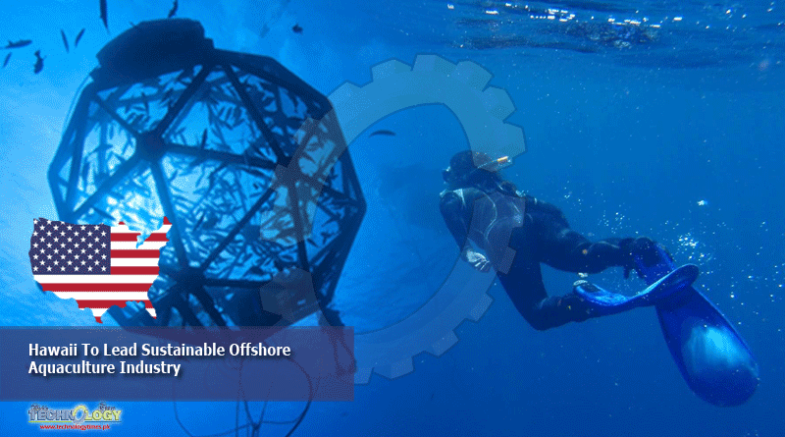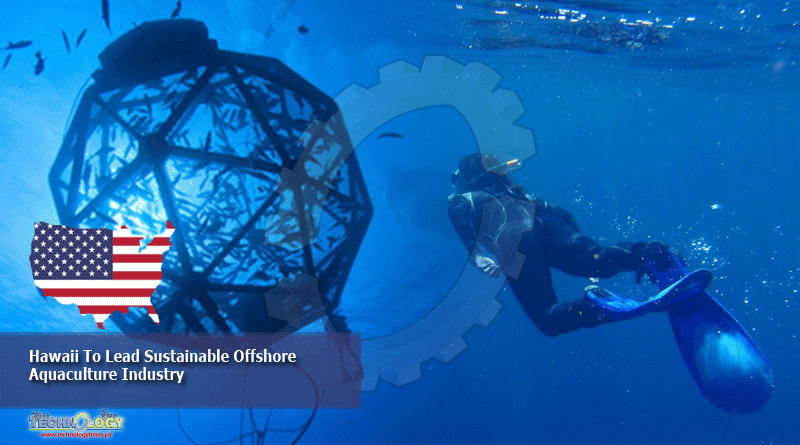Hawaii Has A Long & Rich History Of Cultivating Seafood. Fishponds Were An Important Component Of Subsistence To Native Hawaiians

Americans are enjoying seafood now more than ever. Demand for healthy and fresh seafood is on the rise, which is great news for public health and could be great news for Hawaii and coastal communities, many of which rely on fisheries as a cultural and economic mainstay. I say “could be” because, at present, the United States is outsourcing most of our seafood production overseas and losing out on this economic boon when our nation needs it most.
The U.S. imports over 90 percent of our seafood and of that, over 50 percent is farm raised. Why isn’t the U.S., with its vast coastline and proud agricultural heritage, producing more of its own seafood? Like most things, it’s complicated. But there is a solution. With a well-managed, commercial-scale offshore aquaculture industry, the U.S. could produce all the sustainable seafood our nation needs and more. But we’ll need an act of Congress to get started.
Aquaculture, the process of farming fish in a controlled environment, is the future of seafood production. Aquaculture is the fastest growing food sector in the world, but it remains an untapped industry in the U.S. where we rank 16th in production behind countries in Asia, Europe, Africa and South America. At present, aquaculture in America is constrained by complex regulatory hurdles, including overlapping jurisdiction of federal, state, and local governments, and the lack of a clear permitting process, particularly offshore. Until Congress acts to clarify these regulatory challenges, the economic, environmental, and societal benefits of aquaculture will remain out of reach for most Americans.
Recent developments from our nation’s Capital are a great place to start to put change in motion. Hawaii Senator Brian Schatz just co-introduced bipartisan legislation to support a U.S. aquaculture industry. The Advancing the Quality and Understanding of American Aquaculture (AQUAA) Act, which has companion legislation in the U.S. House, complements a recent Executive Order issued by the Administration last May to support establishing a robust offshore aquaculture industry in the U.S. While it will be challenging for Congress to fully enact this legislation in midst of a global pandemic and divisive election year, I’m still hopeful. So much so that I recently moved my family from Texas to Hawaii to take the helm as CEO of Blue Ocean Mariculture, a Kailua-Kona-based company that has been sustainably farming Hawaiian finfish since 2009.
For three generations, my family has relied on fishing for our livelihood. As an executive, I worked for ten years at Whole Foods, twelve years at an environmental nonprofit promoting ocean health, and most recently at a major U.S. grocery chain as a seafood buyer. My experience has shown me that, when practiced mindfully, offshore aquaculture is the most sustainable means of seafood production available. The United States’ long coastline, expansive ocean resources, skilled labor force and superior technology means we have the potential to lead the world in seafood production. Doubling U.S. aquaculture production to one million tons could also create an additional 50,000 direct and indirect jobs. And many of these jobs could be right here in Hawaii.
Hawaii has a long and rich history of cultivating seafood. Fishponds were an important component of subsistence to the native Hawaiians, and hundreds were constructed and maintained in prehistoric times. Native Hawaiians harvested juvenile reef species to stock fishponds and used fish to enhance food security in times of scarcity. Modern aquaculture practices can have the same effect on the communities they serve by complementing well-managed commercial fisheries.
At Blue Ocean Mariculture, sustainable aquaculture practices are standard operating procedures. We are proud to be the only commercial open ocean aquaculture operation in the U.S., producing about 800 metric tons of fish every year.
While 800 metric tons is a great start, Blue Ocean believes that, if Congress legislates a smart regulatory framework, we can produce as much as 2,400 metric tons a year. This Congressional action should clarify a permitting process for aquaculture in federal waters that preserves existing environmental safeguards and minimizes impacts to other ocean-based industries.
Congress has a significant opportunity to support an industry that creates jobs, is safe and environmentally friendly, and further enriches our public health. It’s a heavy lift, but I have faith Congress can make it happen. My livelihood depends on it.
Ocean Mariculture based in Kailua-Kona, Hawaii and a member of Stronger America Through Seafood (SATS).
This news was originally published at west Hawaii today
